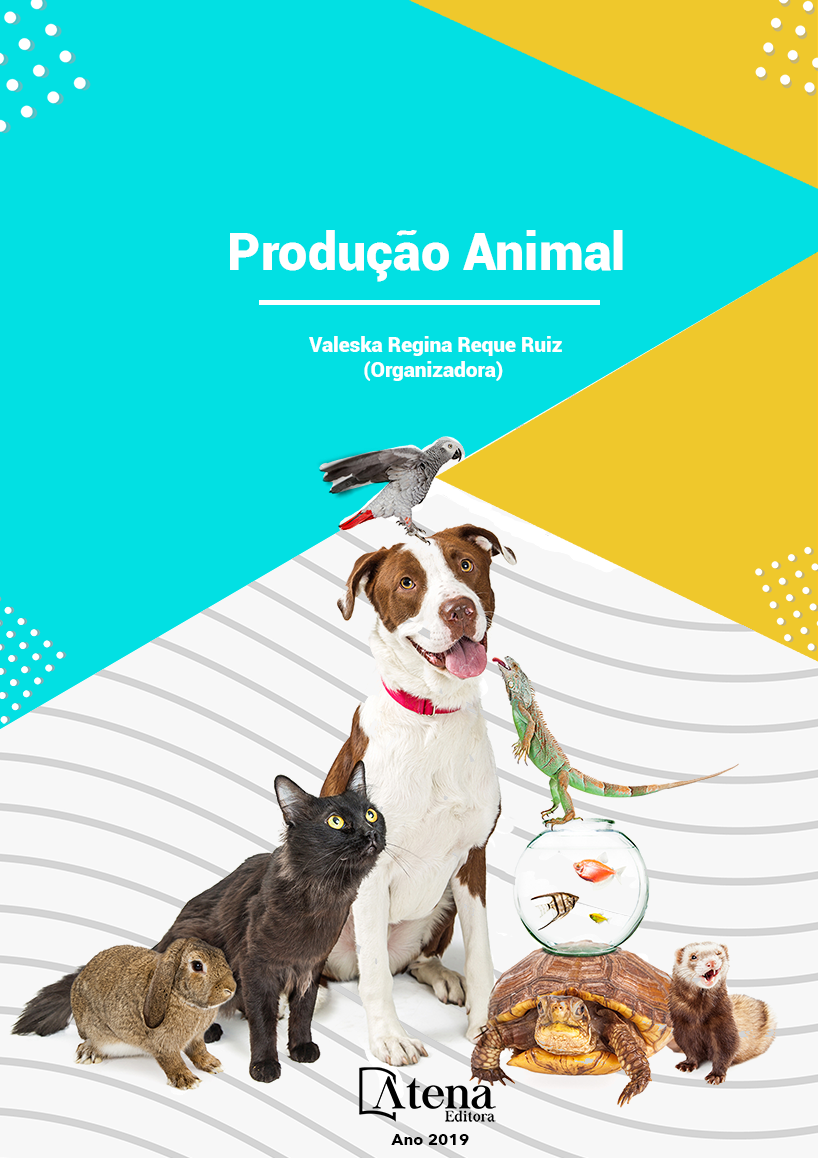
CASCA DE BANANA E SEU EFEITO NA REDUÇÃO DE CUSTOS E CARACTERÍSTICAS DE CARCAÇA DE COELHOS DE CORTE
Objetivo deste estudo foi avaliar
as características de carcaça e a viabilidade
econômica na substituição parcial do milho (M)
por casca de banana (CB) em dietas para coelhos
de corte. Conduziu-se ensaio biológico com
três grupos de coelhos da raça Nova Zelândia
Branco, submetidos as diferentes dietas: 0CB
– dieta controle, sem inclusão de CB; 25CB –
dieta com 25% de substituição do M por CB; e
50CB – dieta com 50% de CB em substituição
ao M. Quando os coelhos estavam com 84
dias de idade, foram abatidos. Foram anotadas
as massas das carcaças que posteriormente
foram submetidas a análises químicas para
verificação de: matéria seca, cinzas e proteína
(PB). Os dados pós-abate, (massa, rendimento
de carcaça, fígado, pele) mostraram que com
aumento do nível de CB, não houve diferenças
nos parâmetros estudados em nenhum dos
tratamentos. Os dados de análise centesimal
da composição da carne não apresentaram
diferenças nos parâmetros, porém, a quantidade
de PB teve pequeno aumento com a inclusão
de CB, sendo: 18,02% de PB no grupo controle
e 19,02 no grupo 50CB. Isso mostra o bom
aproveitamento da inclusão de CB. Quanto
à viabilidade econômica, a inclusão de CB a
nível de 25 e 50%, diminuiu o custo da dieta
em 2,76% e 5,52% respectivamente. Concluise
que, o fornecimento de CB para coelhos
como substituto ao M no nível de até 50% não
interfere na qualidade da carne, tornando viável
o uso da CB.
CASCA DE BANANA E SEU EFEITO NA REDUÇÃO DE CUSTOS E CARACTERÍSTICAS DE CARCAÇA DE COELHOS DE CORTE
-
DOI: 10.22533/at.ed.6091915042
-
Palavras-chave: carne, cunicultura, produção animal, subprodutos.
-
Keywords: by-products, cuniculture, production animal, meat.
-
Abstract:
Purpose to this study was to
evaluate the characteristics and the profitability
of carcass in rabbits that were fed with diets
containing banana peels (BP) in substitution of
maize (M). The biological essay was carried out
with three groups of White New Zealand rabbits,
submitted to the different diets: 0BP – control
diet without BP; 25BP – diet with 25% of BP in
substitution of M; and 50BP – diet with 50% of
BP in substitution of M. The slaughter was made when the rabbits were 84 days old.
Carcass mass was recorded, and the carcasses were submitted to chemical analysis
for verifying dry matter, mineral matter and crude protein (CP). After-slaughter data
(mass, carcass yield, liver and skin) showed that, with an increasing level of BP in
the diet, there were no differences for the evaluated parameters in all the treatments.
Centesimal analysis of meat composition data revealed that, with the substitution,
there were no differences in the parameters; although, in the analysis of CP, there was
a small increase of this nutrient due to the addition of BP, being: 18.02% in CP and
19.02 in 50BP. Is demonstrates a good use of the inclusion of BP. For the economic
viability, BP inclusion of 25 and 50% levels reduced the cost of the diet in 2.76% and
5.52% respectively. Conclusion is that providing BP to rabbits, as a substitute of maize,
in a level up to 50% does not interfere in the meat quality; this demonstrates the use
of BP is viable.
-
Número de páginas: 15
- Ana Carolina Kohlrausch Klinger
- Aline Neis Knob
- Geni Salete Pinto De Toledo
- Leila Picolli Da Silva
- DIULY BORTOLUZZI FALCONE


